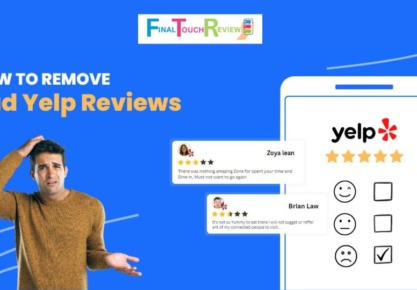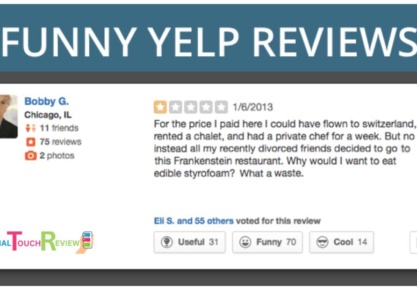Table of Contents
Given the significant impact of online reviews on consumer decisions, the ability to identify fraudulent entries is paramount. Fake reviews can distort your business’s reputation, potentially leading to lost revenue and diminished trust. If you’re concerned about fake Yelp reviews, our comprehensive guide is here to provide invaluable assistance!
This comprehensive guide will arm you with practical insights to identify and handle fake reviews effectively. So, get ready to master these tactics to protect your business and ensure authentic feedback stands out in today’s digital landscape.
What Are Fake Yelp Reviews?
Fake Yelp reviews are misleading or false feedback posted on the platform to artificially boost a business’s reputation or detract from a competitor’s. Yelp’s advanced review system detects these fraudulent entries through multiple factors, such as repeated reviews from the same computer or biased content. It also identifies solicited reviews that violate Yelp’s guidelines.
With Yelp averaging 145 million unique visitors each month and 82% of them intending to make a purchase, negative reviews, whether real or fake, can deter customers and lead to lost revenue.
How Fake Yelp Reviews Can Hurt a Business?
Fake Yelp reviews can significantly damage a business by skewing its reputation and driving potential customers away.
Businesses using fake reviews face penalties, including lower search rankings and potential “Consumer Alert” warnings. Fake Yelp reviews can hurt a business in certain ways, some of which include:
- Damage Credibility: Fake reviews can severely damage a business’s reputation. Once customers realize the reviews are not authentic, trust is lost, which in turn harms your brand’s image.
- Impact SEO Rankings: Search engines penalize businesses using fake reviews, reducing visibility. This jeopardizes your hard-earned rankings, making it harder for potential customers to find you.
- Breach of Platform Guidelines: Violating Yelp’s guidelines can result in severe penalties, including removing your business listing or permanently banning the platform.
- Customer Disappointment: Fake Yelp reviews set unrealistic expectations, leading to customer dissatisfaction when the actual service or product fails to meet the hyped standards, leading to lost business opportunities.
- Triggers Skepticism: Too good to be true—an abundance of overly positive reviews can make customers skeptical, triggering doubt about reliability.
- Long-Term Damage: The effects of fake Yelp reviews can leave a lasting impression, questioning your business’s service for years and potentially leading to a severe reputation crisis
How To Spot Fake Yelp Reviews
Examine Reviewer’s Name
By analyzing naming patterns, you can better discern genuine feedback from deceptive content, ensuring a more reliable review experience.
- Check for Patterns in Name: Look for names that feature a single letter with a period as a middle name; this pattern often indicates a lack of authenticity.
- Check for Commonality: Assess the first and last names for commonality.
- Generic Name Combination: Generic combinations, like “James Smith” or “Michael Doe,” may signal a fake review.
- Names with Numbers and Mixed Letters: Beware of names with random numbers and mixed letters, as these are red flags.
Check Profile Picture
To identify fake Yelp reviews, examine the reviewer’s profile picture. Follow these steps:
- Reverse Image Search: Click on the user’s profile photo and perform a reverse image search. The account may be fake if the image is a stock photo from sites like Freepik, Pexels, or Shutterstock.
- Image Quality: Look for overly polished or professional photos that seem too good to be true. These images are often taken by photographers or enhanced with Photoshop.
- Repeated Images: If the same profile picture appears across multiple reviews or on different platforms, it could indicate a fake account. For example, a photo of an actor or a model might be used in several fake reviews.
Check Reviewer’s History
As a savvy consumer, you have the power to discern between fake and authentic reviews by checking a reviewer’s history. The following methods can help you:
- Check for Pattern in Review: Look for patterns that suggest manipulation, such as a tendency to post only excessively positive or negative reviews. For instance, if a reviewer has numerous five-star ratings for restaurants across different cities but posts one-star reviews for unrelated services, this raises suspicion.
- Consider Inconsistent Location: Pay attention to the reviewer’s location; if they frequently review establishments in one country but suddenly comment on businesses in another, it may indicate inauthenticity.
- Check for Profile History: Verify the reviewer’s profile by examining the date their account was created, review activity, and links to social media accounts.
- Check for Legitimacy: A legitimate profile typically has a consistent activity history and realistic details. If a user’s profile seems sparse (lacking in details or activity) or exaggerated (too many reviews from various locations within a short time), it’s likely a red flag.
Check the Writing Style
When checking Yelp reviews, examine the writing style for authenticity. Genuine reviews often use casual language and reflect personal experiences, unlike fake reviews which may use overly formal or exaggerated terms like “exceptional service” or “outstanding quality.” Look for these signs to identify potential fakes:
- Unnatural Phrasing: Phrases like “mind-blowing experience” or “top-notch performance” are red flags.
- Grammar Issues: Watch for misspellings or awkward grammar that suggest non-native English speakers or rushed content.
- Overly Positive: Excessive enthusiasm such as “life-changing” or “the best ever” can indicate inauthentic reviews.
- Repetitive Language: Simple, repetitive phrases like “great place” or “highly recommend” may lack depth.
Fake Reviews are Frequently Either Five-Star or One-Star Ratings
Five-star and one-star—often indicating potential fake reviews. Genuine feedback usually falls in between these extremes, reflecting more nuanced experiences. Here’s how to identify fake Yelp reviews:
- Look for Extremes: Fake reviews frequently present either perfect or disastrous ratings. Balanced feedback is rarer but more reliable.
- Check Review Patterns: An influx of five-star or one-star reviews in a short period may suggest manipulation, particularly if there’s a sudden shift in sentiment.
- Assess Review Detail: Detailed, specific reviews are more trustworthy than vague, overly emotional ones. Fake reviews often lack depth.
How To Report Fake Yelp Reviews: Step by Step Guide
Step 1: Claim Your Yelp Business Profile
- Claim your business profile on Yelp.
- Visit Yelp For Business and follow the on-screen instructions to claim your page.
Step 2: Login to Your Account
- Log in to your Yelp business account. On the dashboard, select the ‘Reviews’ to access all customer reviews for your business.
Step 3: Find the Review You Want to Report
- Scroll through your list of reviews to locate the one you want to report.
- You can use filters or search functions if you have many reviews.
- Make sure you select the exact review that violates Yelp’s guidelines.
Step 4: Select “Report Review”
- Select the review you want to remove.
- Click on the three-dot menu icon on the side of the review text.
- From the options that appear, choose ‘Report Review’.
Step 5: Complete the form
- Complete the form by giving an appropriate reason for removing the review.
- Add any additional information that supports your cause. The more detailed your explanation, the better Yelp can evaluate the issue.
Step 6: Wait for Yelp to Remove the Review
- Submit the report.
- Yelp’s moderation team will review your request. This process may take several days.
- You will be notified of their decision via email.
- If you don’t receive an update within a reasonable time, reach out to Yelp directly using your case number to follow up.
What Not To Do With Fake Yelp Reviews
When dealing with fake Yelp reviews, there are several actions to avoid to protect your business’s reputation.
- Don’t Flag the Review: Yelp does not intervene in disputes between reviewers and business owners, so don’t waste time disputing false reviews.
- Avoid Retaliation: Responding in anger or anguish can backfire. Yelp’s algorithms may perceive replies as a sign of legitimacy, and an emotional response can alienate potential customers.
- Don’t Spam for Positive Reviews: Flooding your page with positive feedback can seem suspicious. Fake reviews can easily be detected, leading to a loss of credibility.
- No Soliciting Reviews: Writing your reviews or asking friends and family is against Yelp’s terms and could result in penalties.
- Avoid Buying Reviews: If discovered, this unethical practice can irreparably damage your reputation, leading to a significant loss of customer trust.
Wrapping Up
Identifying and reporting fake Yelp reviews safeguards your business’s online reputation. Whether it’s analyzing reviewer details or reporting suspicious content, the above-mentioned tactics will help you maintain a credible profile and protect your brand’s trustworthiness.
FAQs
How to remove fake reviews from Yelp?
- Step 1: Claim Your Yelp Business Profile
- Step 2: Login to Your Account
- Step 3: Find the Review You Want to Report
- Step 4: Select “Report Review”
- Step 5: Complete the form
- Step 6: Wait for Yelp to Remove the Review
Can Yelp detect fake reviews?
Yes, Yelp uses advanced algorithms to detect fake reviews by checking for patterns such as multiple reviews from the same IP address or biased content.
What happens when you report a Yelp review?
When you report a review, Yelp’s moderation team evaluates it. If the review violates Yelp’s guidelines, it may be removed. You’ll receive an update via email.
How can you tell if Yelp reviews are fake?
Fake Yelp reviews often have generic names, questionable profile pictures, suspicious review history, unnatural writing styles, and extreme ratings (five-star or one-star).
How can fake Yelp reviews hurt a business?
Fake reviews can damage a business by skewing its reputation, impacting purchase decisions, reducing visibility in search results, and leading to lost revenue.

